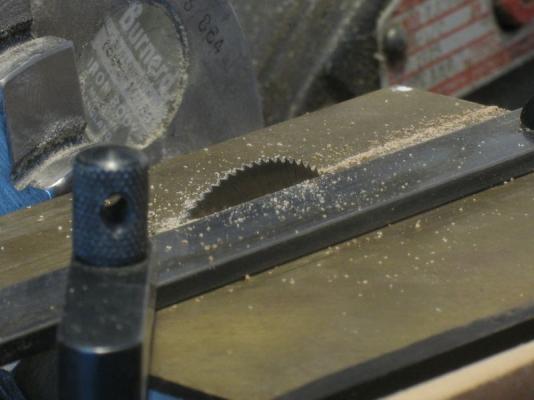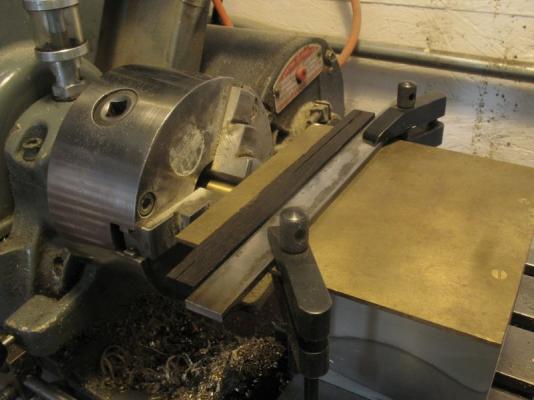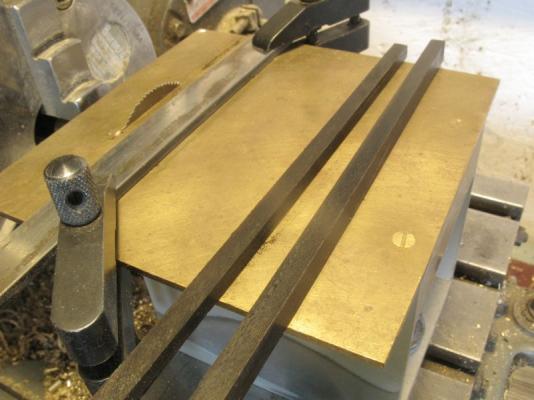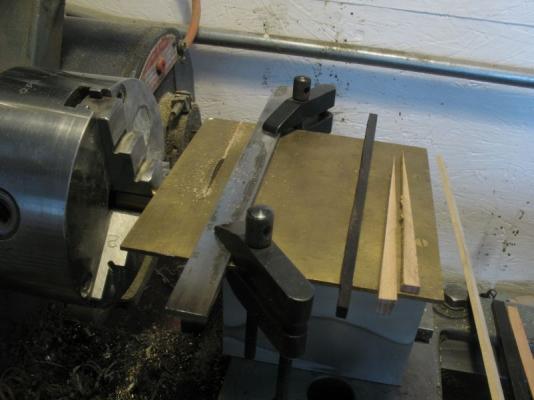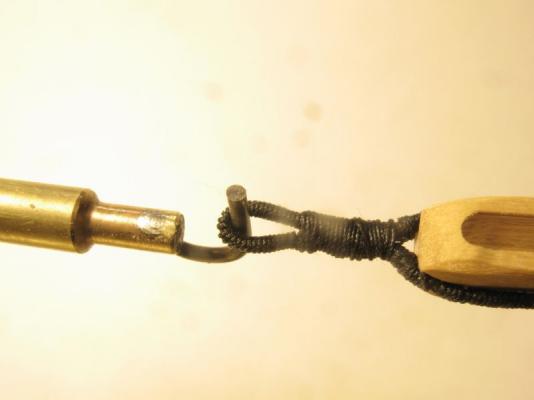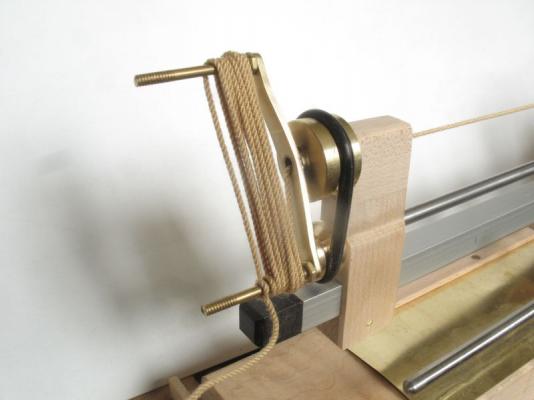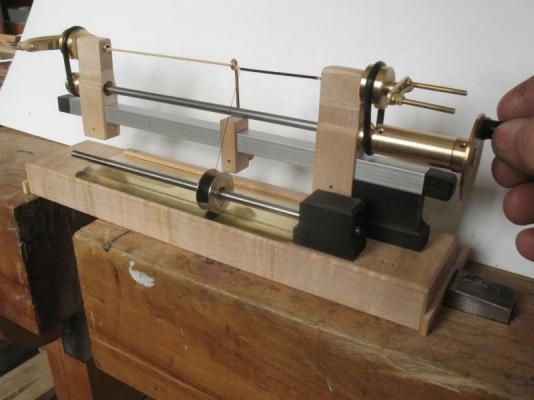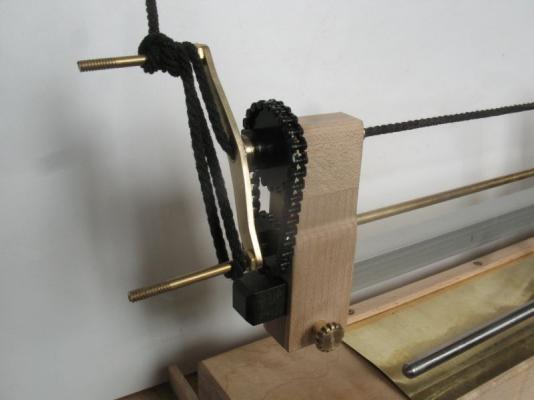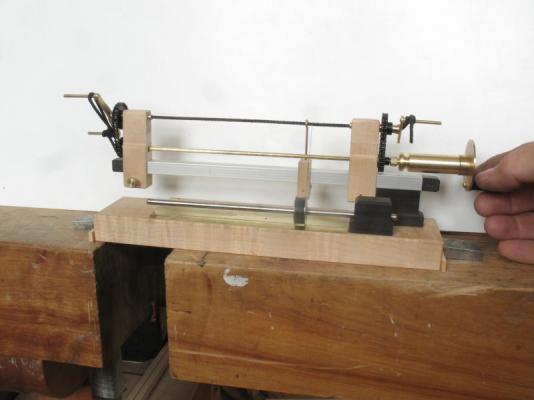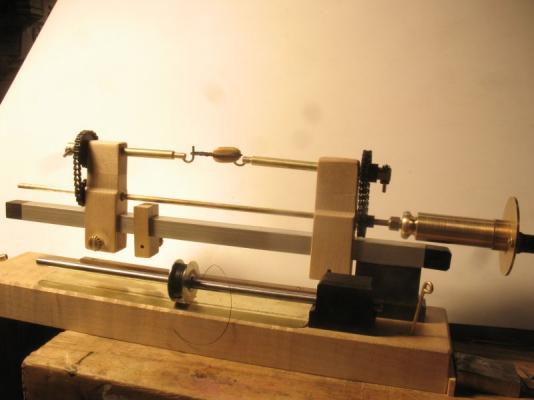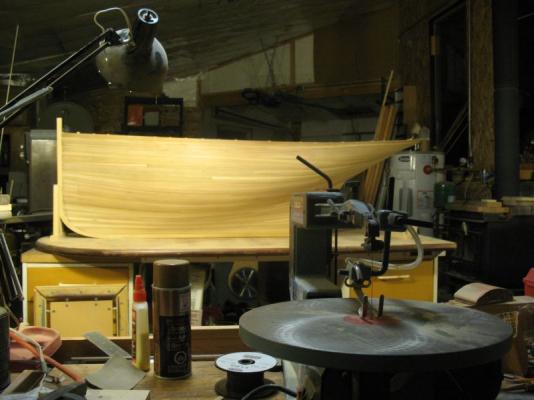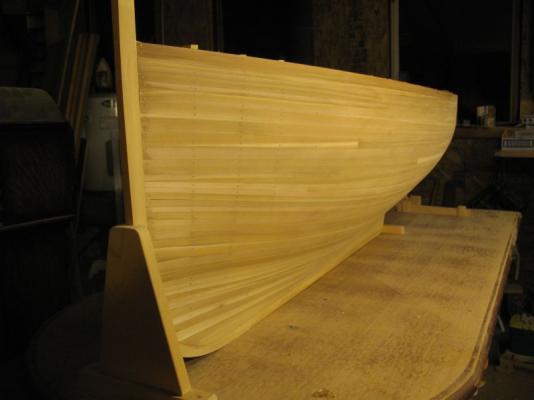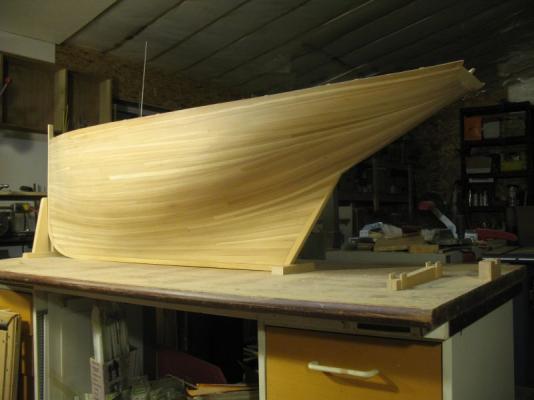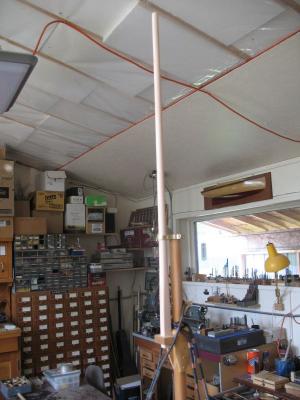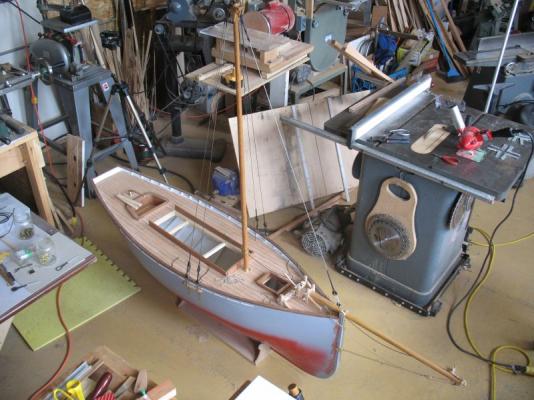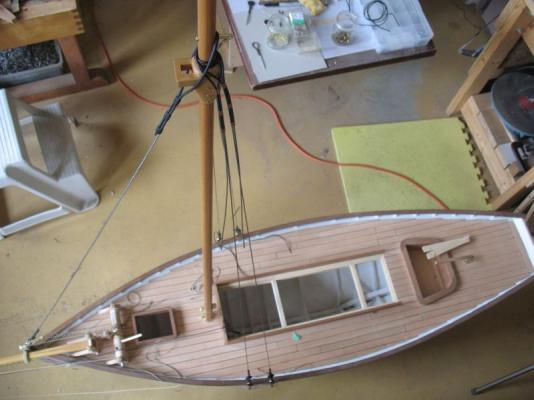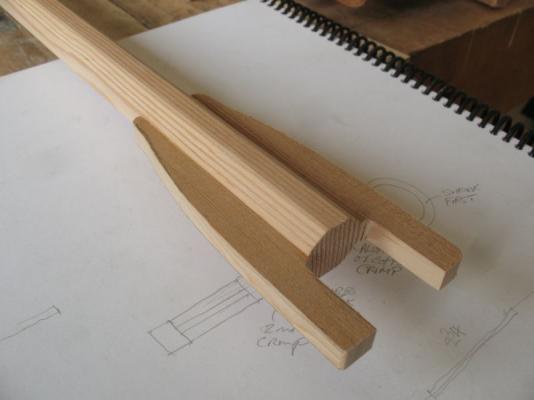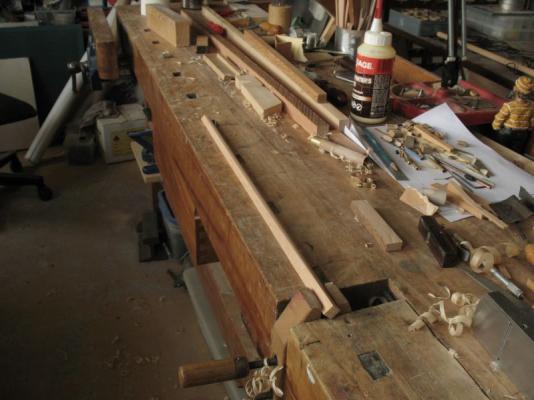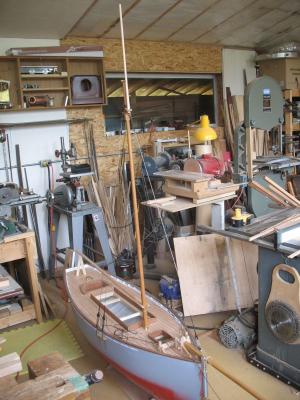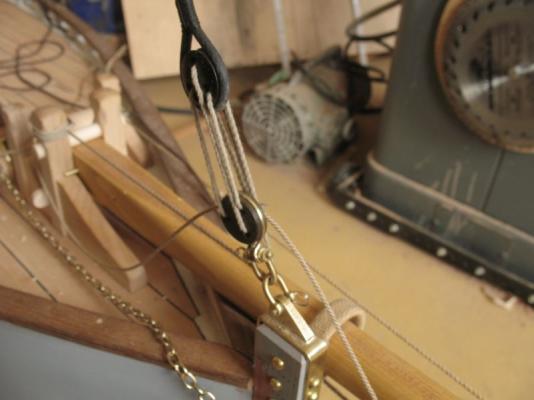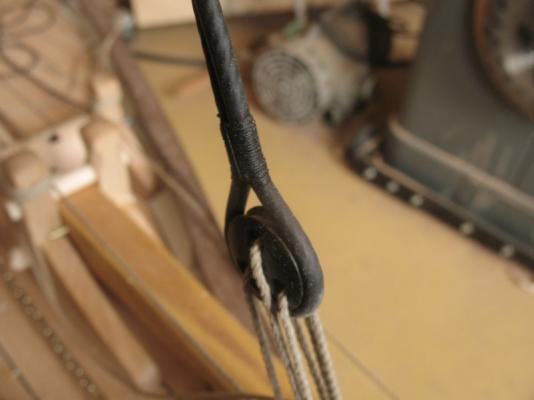-
Posts
5,195 -
Joined
-
Last visited
Content Type
Profiles
Forums
Gallery
Events
Everything posted by michael mott
-

Microlux Tilt Arbor Saw Problems
michael mott replied to capnharv2's topic in Modeling tools and Workshop Equipment
Tony thanks for your kind comment. Offhand I do not have an answer to your question, but what about the various U tube demonstrations, I have seen a couple of them admittedly for an unrelated subject, it is not a resource I use very often, but I know that some of it is very good. The other thought that comes to mind is to visit a model engineering group, these are the folk who build the most amazing things with small machine tools. The link I provided is one of many, just a start. Michael -

Microlux Tilt Arbor Saw Problems
michael mott replied to capnharv2's topic in Modeling tools and Workshop Equipment
Because I was curious about the power and speed issues with the slitting blades I set up an experiment on the lathe to test my thoughts about the power and speed. The 3/16 thick ebony was cut at 375 RPM The Apple was cut with the back gear set and the speed was 25 rpm The slitting saw was 1 3/4 inch diameter x .014 thick The slower speed was harder to feed through but did not burn or clog. Neither did the ebony. My conclusion from this limited experiment is that with a slow speed you need a lot of power or a gear head drive that will not bog down, A rheostat generally reduces the amount of electricity to create the slower speed and so the motor cannot operate with full power. Michael -

Microlux Tilt Arbor Saw Problems
michael mott replied to capnharv2's topic in Modeling tools and Workshop Equipment
Interesting pictures Harvey I would be curious as to what happens if you wax the blade after cleaning the resin off it and then try the cherry again. I just thought about the issue of the fast Vs slow speed. Does the motor slow down as a result of a rheostat or is the voltage modulated but at full power. if it is a rheostat then that would be why the motor bogs down at low speed, it would be underpowered. Michael -

Microlux Tilt Arbor Saw Problems
michael mott replied to capnharv2's topic in Modeling tools and Workshop Equipment
Harvey I just had an Idea, what happens if you run you blade at a very low speed and with the blade up as high as it will go? Michael -

Microlux Tilt Arbor Saw Problems
michael mott replied to capnharv2's topic in Modeling tools and Workshop Equipment
Harvey I have just read through this entire thread, I do not own either a Proxxon or any other small saw. From what I have heard so far I see a number of things that you need to take into account. 1) The first thing is that the very fine slitting saws were not designed for cutting hard wood, they were designed for cutting metal with a lubricant. 2) the issue of the vibration and wobble is caused by the blade buckling from the heat. this is as was suggested that the space between the teeth is filling with wood and the blade then acts like a solid disk with no teeth. 3) use a blade with courser teeth. Think about how the blade on a bandsaw works or a jewelers saw you are faced with the same issue when cutting a thin sheet of metal with a jewelers saw one need to have at least 2 teeth that will sit on the edge of the metal so that it does not fall into the space between the teeth however on the circular saw the teeth are not at a right angle to the material being cut so the very fine teeth have a much more difficult time. 4) If you raise the blade to its highest position then the teeth will be more vertical and so less teeth will be engaged with the material being cut. 5) The best solution is to use a blade with fewer teeth. I did take a look on the net at the Proxxon saws and also for slitting saws. and the 80 tooth would be your best bet. Michael -
As a result of watching Alexey's video of his machine at work I realized how much superior his design is compared to the one I made. I went to work to make my one work better. Thank you Alexey for sharing your design, I hope your sales go well. The thing that I originally did not understand was the need for some sort of gearing and so that is why my original design did not have any, having used mine I realized why the need for the gears. So because I already had the basic structure I added a way to transfer the motion from one end to the other by adding a second shaft and some O ring drive belts not perfect but a much better way. Also I added the wings to the top shafts to wind up the the extra rope which is so much better than having fed through the plastic tube. (hey I am trainable) Because the O rings on the brass were slipping more than I would like I searched through the scrap gear box looking for some gears to give a positive transfer from end to end as in Alexey's design, after some hours mucking about with re-machining some gears, I remembered the Servo-link gears and chain I had purchased for some model train stuff I was working on a while back. As they said in one of the Monty Python episodes "this was the turning point for the Dinsdale Brothers" Sorry I just couldn't resist. The Servo-link stuff was perfect . The next part was the main reason for the exact sync making the Becket which requires two hooks that rotate the same speed. I am able to swap out the serving shafts for the hook ones. after serving the strop and binding the ends together so that it is a continuous ring slipping it over a block and adjusting it so that the connecting area will be under the seizing. And a final shot it is a bit untidy but I know that this will improve, the one thing that was a bit of a problem for me was the block wanting to come off the hook, so a modified hook will be in order. Again big thanks to Alexey for sharing his design, One of the great things about this site is the willingness of members to share their findings, (and windings) Michael
-
Funny I didn't think they had photography that far.... back I could be wrong of course... have been many times before Michael
-

SS Vinal Haven by TBlack - FINISHED
michael mott replied to TBlack's topic in - Build logs for subjects built 1851 - 1900
I would imagine a gimbled stove in the galley Michael- 326 replies
-
- vinal haven
- steam ship
-
(and 1 more)
Tagged with:
-
So did you properly half lap the slats on the hatches? inquiring minds want to know! Looking good Sir Michael
-

ancre Le Fleuron 1729 by rekon54 - 1:24
michael mott replied to rekon54's topic in - Build logs for subjects built 1501 - 1750
Rekon your work is a work of art! you make it look easy but we all know how much time and knowledge it takes to transform an idea into a three dimensional piece. Your work is inspiring to say the least. Michael -

ancre Le Fleuron 1729 by rekon54 - 1:24
michael mott replied to rekon54's topic in - Build logs for subjects built 1501 - 1750
Yes, thank you for sharing these amazing work of craftsmanship. Michael -
Danny thanks for the explanation it is just the Monty Python mind that I have been given that makes want to question everything.Back to whenever, [Ere' wot are you doin' puttin' that beam there 'aven't I told you to do what I tell you] it just bubbles up now and then.thinking of the crew that were building these amazing vessels. Michael
-
Danny the Blue, Green,and Red lines are confusing to my addled brain. I am trying to understand what you are showing but it is eluding me. Michael
-
Mark yes for sure if I need one though I do have a couple of them. Harvey which boat is that? Michael
- 2,207 replies
-
Hi John, yes I will need to add a sheave at the bottom of the topmast for the heelrope. so the topmast can be housed. Michael
- 2,207 replies
-
John, Mark, Carlos, thank your for checking in and your kind words. Today I put the boat on the floor so I could work at the top of the shrouds I chose to fix them in a similar manner to the lower ends. by dropping the model to the floor I could stand and the bolster was at 65 inches above the floor and the top of the topmast was 84 inches. I set all the deadeyes first then wrapped the shrouds around the mast and added some tension as I threaded the crimps and shrink I began with the forward starboard the forward port then hooked on the forestay which I made from 3/32 it was a lot tougher to work with than the 1/16th, then continued with the rear starboard then rear port shrouds. I will do the seizing tomorrow to give my fingers a rest. Time for the new boom, first the jaws were glued on then given a rough shaping. I will add some leather when the fixings are completed on the jaws. the wood is clear fir. The brass goose neck will be removed and a platform fitted for the gaff boom then a smaller mast started with a square section of clear fir and shaped down so that it could be slid up through the yoke, now I need to make the Fid and metal plate. thats it for now. Michael
- 2,207 replies
About us
Modelshipworld - Advancing Ship Modeling through Research
SSL Secured
Your security is important for us so this Website is SSL-Secured
NRG Mailing Address
Nautical Research Guild
237 South Lincoln Street
Westmont IL, 60559-1917
Model Ship World ® and the MSW logo are Registered Trademarks, and belong to the Nautical Research Guild (United States Patent and Trademark Office: No. 6,929,264 & No. 6,929,274, registered Dec. 20, 2022)
Helpful Links
About the NRG
If you enjoy building ship models that are historically accurate as well as beautiful, then The Nautical Research Guild (NRG) is just right for you.
The Guild is a non-profit educational organization whose mission is to “Advance Ship Modeling Through Research”. We provide support to our members in their efforts to raise the quality of their model ships.
The Nautical Research Guild has published our world-renowned quarterly magazine, The Nautical Research Journal, since 1955. The pages of the Journal are full of articles by accomplished ship modelers who show you how they create those exquisite details on their models, and by maritime historians who show you the correct details to build. The Journal is available in both print and digital editions. Go to the NRG web site (www.thenrg.org) to download a complimentary digital copy of the Journal. The NRG also publishes plan sets, books and compilations of back issues of the Journal and the former Ships in Scale and Model Ship Builder magazines.


